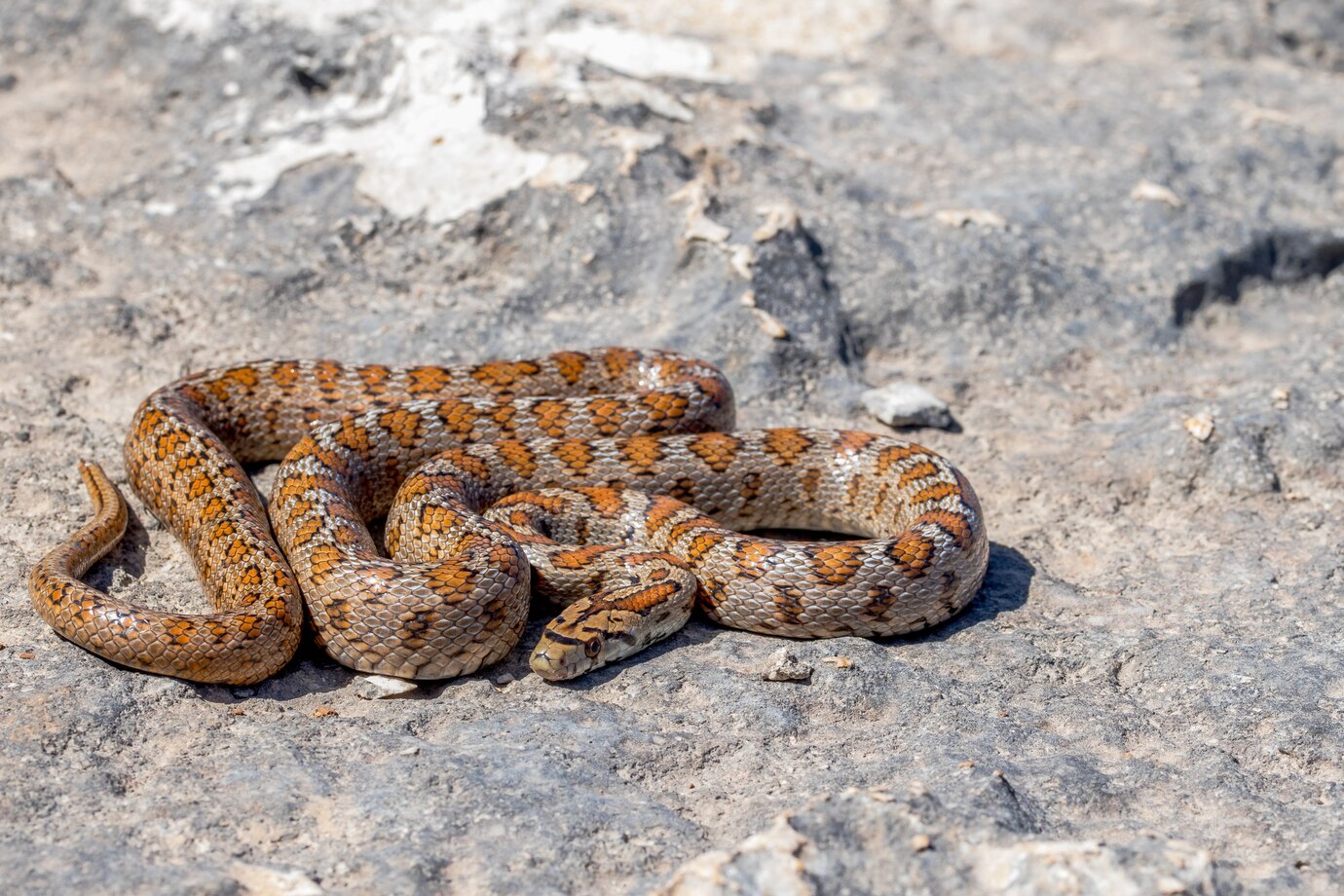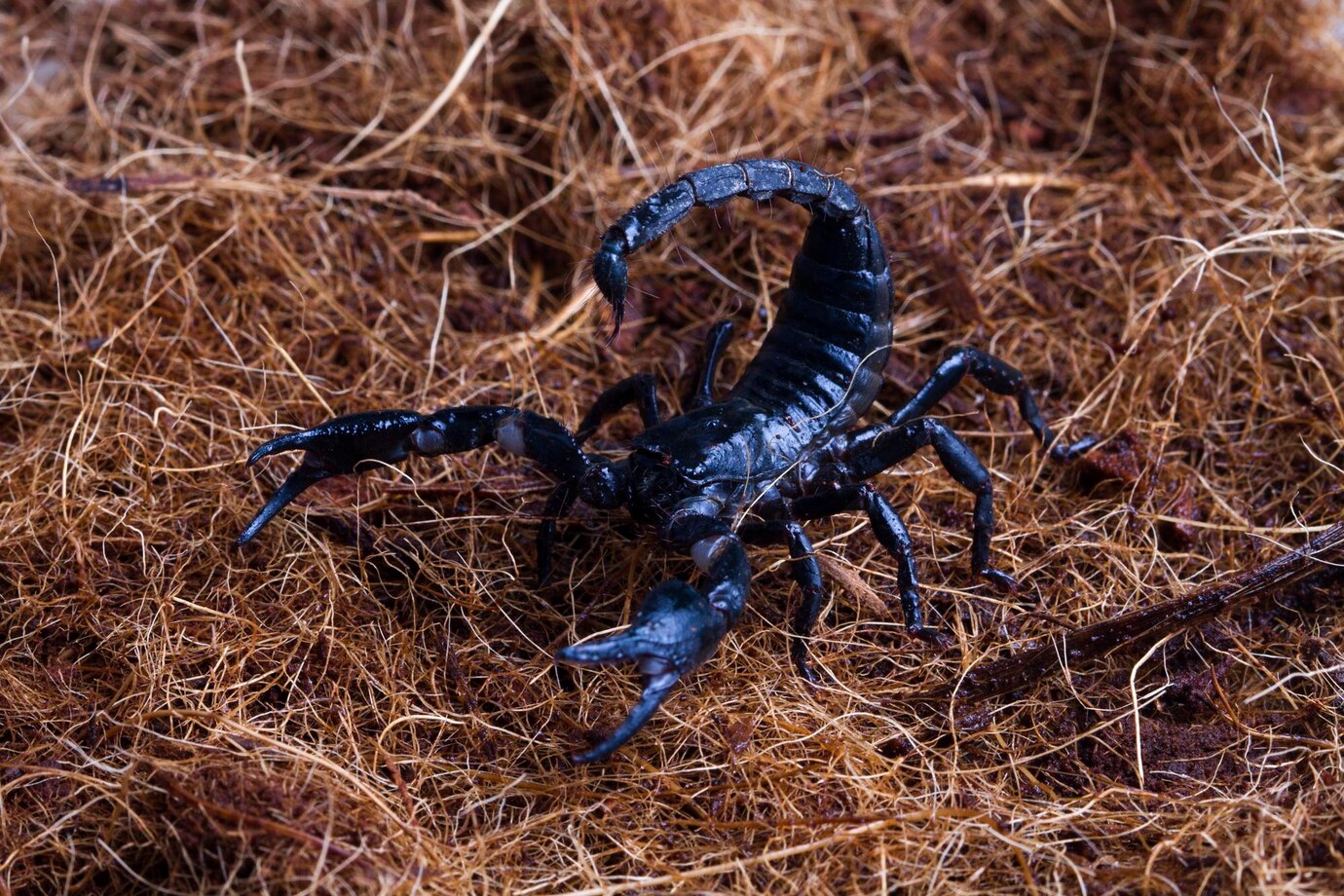Texas, the biggest state in America, has it’s share of wildlife species, some of which can be deadly to humans. Whether you’re hiking in the Hill Country, exploring the deserts of West Texas, or enjoying a day at the lake, you should know the animal species that roam the state.
Because Texas is located on the Gulf of Mexico, you can find deadly species not only on land but also in the water. Today we’ll explore 8 of the most deadly animals in Texas, and more importantly, how to stay safe while living, working, or going on vacation in this state.

1. Eastern Diamondback Rattlesnake
The Eastern Diamondback Rattlesnake is the largest venomous snake in North America. These snakes can grow up to 8 feet in length, making them one of the most important predators in the wild. You can find it in the southeastern parts of Texas because it prefers habitats like grasslands, forests, and wetlands.
The Eastern Diamondback Rattledsnake’s venom is really potent and can cause severe tissue damage, internal bleeding, and even death if you don’t take antidote quick enough. If you’ve been bitten, you might have symptoms like intense pain, swelling, nausea, weakness, and breathing issues. Its large size and aggressive behavior make it particularly dangerous. The snake’s distinctive rattle serves as a warning, but it may strike without warning if it feels threatened.
If you walk through tall grass or wooded areas, you should always be vigilant. Wear thick boots and long pants when hiking in areas that may have a lot of snakes, and if you see one by chance, do not approach or try to touch it. Back away, sowly.
2. Black Widow Spider
The Black Widow Spider is one of the most feared insects not only in Texas but in the whole world. It has a glossy black body and a red hourglass shape on its abdomen, so you can recognize it easily. These spiders stay in the dark and undisturbed areas like sheds, garages, and woodpiles.
The venom of the Black Widow is neurotoxic, and the bite causes severe pain, muscle cramps, headaches, nausea, and in some cases even death, especially in young children and the elderly. You might not feel the bite immediately, but the symptoms intensify over several hours.
Even though these spiders don’t usually bite for no reason, when you move objects that have been stored for a while, you should always wear gloves. However, if you get bitten, you should clean the wound and go to the emergency room.
3. American Alligator
You can find the American alligator throughout much of Texas, particularly in lakes, swamps, and slow-moving rivers. While they are generally not very aggressive unless provoked, they can be deadly if they feel threatened. These reptiles can grow really big, sometimes up to 12 feet, and when they mature, they can weigh over 900 pounds.
Alligators have very powerful jaws that can snap shut with incredible force. They are really stealthy, and they can move quickly in water; this makes them a significant danger to anyone that gets too close, especially in areas that have a lot of vegetation.
You should always keep a safe distance from alligators and keep the children and pets away from the shore. Don’t ever feed these animals because they can associate humans with food and become more aggressive. The biggest risk from an alligator is amputation; that’s if you survive the bite.
4. Texas Coral Snake
The Texas coral snake is another venomous snake that’s really common for this area. However, this species is more elusive than the rattlesnake. You can easily identify it by the red, yellow, and black bands that are on its body. These snakes are found in wooded areas, grasslands, and under leaves.
The venom from this snake is also neurotoxic, meaning that it will attack your nervous system, causing paralysis or even death if you don’t take the antidote quick enough. They are not known to be very aggressive, and they tend to avoid heavily populated areas. The humans don’t usually see this species, so the bites are quite uncommon.
Don’t touch any snake , especially the brightly colored snakes, because they are usually more venomous. If you get bitten, seek medical attention immediately, so the doctors will administer the anti-venom. .
5. Mountain Lion
Mountain lions, also known as cougars or pumas, are really large cats that live in various parts of Texas, especially in the Hill Country and the western regions. These predators usually avoid humans, but they can cause severe damage if they feel threatened or cornered. Mountain lions are strong, fast, and capable of delivering deadly attacks for humans. They have sharp claws and powerful jaws that make them really great predators, and they can strike quickly and silently.
Keep your eyes on kids or pets because they can be sure victims. If you find a mountain lion, make yourself look bigger by raising your hands or opening your jacket. This way you’ll assert dominance. Don’t ever run, so they won’t see you as prey; instead, back away slowly and try to make loud noises to scare the animal.
6. Wild Boar
Wild boars are another species that is found throughout Texas. These animals are aggressive and can weigh over 300 pounds. They have sharp and long tusks that they use to attack both predators and prey. When you threaten or corner them, they will surely attack, and if they catch you, they will cause serious injuries with their tusks. They are also carriers of some diseases like swine flu and brucellosis, both of which can be transmitted to humans.
Don’t approach wild boars, especially during the breeding season, when they are even more aggressive. If you see one during hiking or walks, just back away slowly and leave the area.
7. Kissing Bugs
While they are not often considered dangerous, kissing bugs are a serious health risk in Texas. These blood sucking insects are found in rural areas, especially in the southern part of the state.
Kissing bugs can transmit Chagas disease, a parasitic infection that can cause fever, fatigue, body aches, and an enlarged colon and liver, and if left untreated, it will cause death by heart failure.
You can be infected directly by the bug’s bite or by their feces that are left on uncooked food. This way, the disease can enter the bloodstream and cause a lot of health problems. You can use insect repellent when you are in areas where there are a lot of these bugs. You should also inspect sleeping areas for signs of these bugs and seal any cracks or gaps in the walls.

8. Scorpions
Texas is home to several species of scorpions, but the bark scorpion is the most venomous and is the biggest danger for humans because its bite can be deadly. These scorpions are usually found in the southwestern parts of the state, in the desert, and other dry areas. The venom of the bark scorpion can cause intense pain, swelling, vomiting, high blood pressure, a fast heart rate, and in some cases, it can be deadly. Stings can also cause death if you happen to be allergic because the venom can cause anaphylaxis.
These scorpions are not aggressive but can sting if they are disturbed. To avoid them, you should be careful when reaching into dark spaces or when handling objects that could be home to these insects. If you get stung, go to the emergency room immediately.
If you want to learn more about U.S. wildlife, we recommend reading this book. We think you’ll like it!













One Response